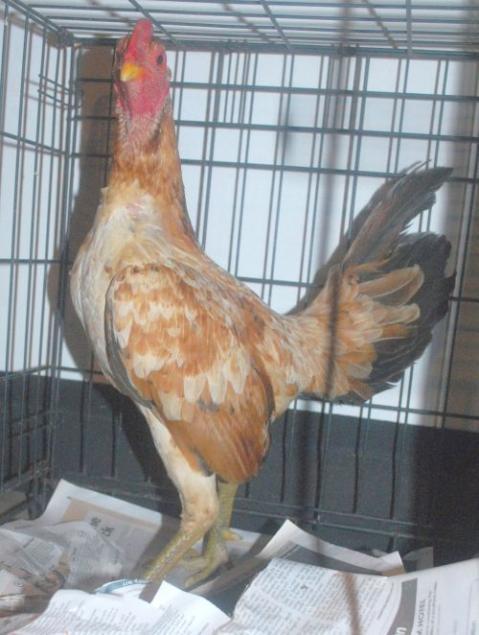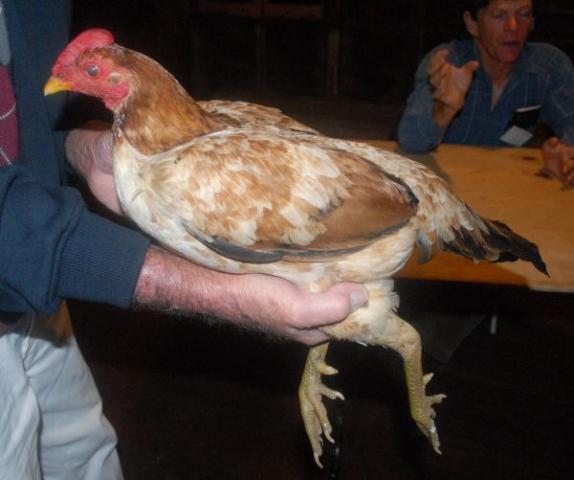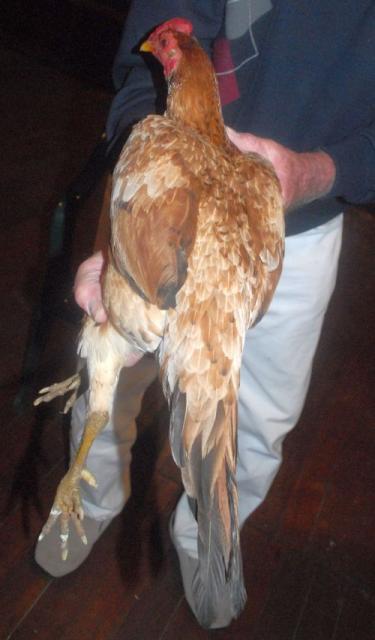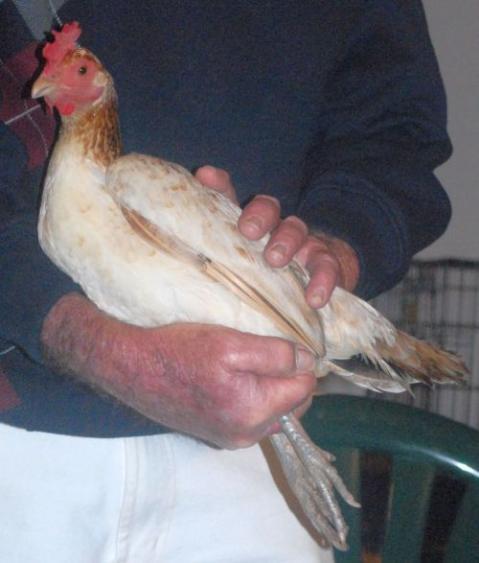Here is some information on the Henny Feathering Gene (Hf)
CHICKEN Summary :
The typical feathering of hens is part of their secondary sexual characteristics, produced by the action of estrogen. Much of this estrogen is produced from androgen in the ovaries by the enzyme aromatase. In certain strains of two breeds of chicken, namely the Sebright Bantam and the Golden Campine, roosters have the same feathering as hens, rather than the typical male form of feathering. This disorder is called henny feathering. It results from a mutation in the aromatase gene, causing thr gene to be expressed in the skin of both sexes. In males, this leads to abnormally high levels of estrogen, which in turn produces henny feathering. Henny feathering is interesting because it illustrates that not all mutations result in loss of activity; some mutations can cause a gene to be switched on in cells in which it is normally inactive.
Clinical Summary :
Apart from the hen-like feathers, males with this trait have a substantially reduced reproductive ability, probably because the increased levels of plasma estrogen inhibit spermatogenesis
(George et al., 1990)
Inheritance :
The aromatase gene is autosomal incomplete dominant gene, but the form of inheritance of henny feathering is not what is normally seen with an autosomal mutation, because the phenotype associated with the mutation
(henny feathering in males) can be seen only in males. This is an example of a sex-limited trait. Furthermore, the normal expression of the gene is seen only in females. Thus the two alleles at the one locus give rise to the two possible forms of sex-limited inheritance. The henny-feathering mutation also illustrates how two alleles can present more than one form of inheritance, depending on which trait is being considered. With respect to aromatase activity, gene action is co-dominant, i.e. heterozygotes have an enzyme activity mid-way between that of the two homozygotes. In this case, however, the activity in the skin of the normal homozygote is zero. With respect to feathering, the mutant is dominant, because heterozygotes produce sufficient enzyme in the skin, and hence sufficient oestrogen, to cause henny feathering.
Molecular Genetics :
This disorder is the first insertion mutation documented in any domesticated species of animal. In this case, it appears that the terminal repeat sequence of a retrovirus has been inserted into the 5' promoter region of the aromatase gene (Matsumine et al., 1991). This terminal repeat has a promoter of its own, which causes the aromatase gene to be switched on in atypical places, such as the skin of both sexes, giving rise to the henny- feathering trait in males. The actual peptide produced by the mutant allele is exactly the same as that produced by the normal allele, as we would expect for such a mutation.
Mapping Summary :
The Hf locus is located on the long arm of chromosome 1.
Information above from Ultimate Fowl
Chris










